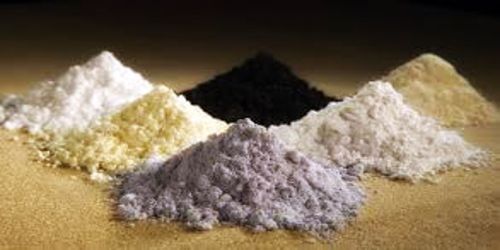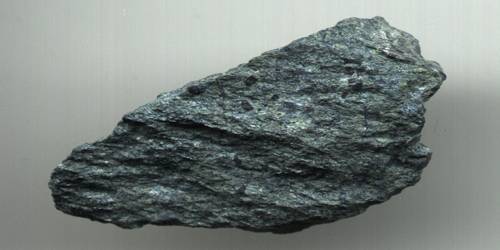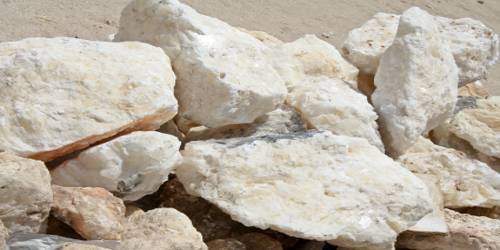Definition –
Rare-Earth Elements (REEs) are a group of seventeen chemical elements in the periodic table, specifically the fifteen lanthanides, as well as scandium and yttrium. Scandium is found in most rare earth element deposits and is sometimes classified as a rare earth element. The International Union of Pure and Applied Chemistry include scandium in their rare earth element definition. Rarely, a broader definition that includes actinides may be used, since the actinides share some mineralogical, chemical, and physical (especially electron shell configuration) characteristics.
The 17 rare-earth elements are cerium (Ce), dysprosium (Dy), erbium (Er), europium (Eu), gadolinium (Gd), holmium (Ho), lanthanum (La), lutetium (Lu), neodymium (Nd), praseodymium (Pr), promethium (Pm), samarium (Sm), scandium (Sc), terbium (Tb), thulium (Tm), ytterbium (Yb), and yttrium (Y). They are often found in minerals with thorium (Th), and less commonly uranium (U).
The rare earth elements are all metals, and the group is often referred to as the “rare earth metals.” These metals have many similar properties, and that often causes them to be found together in geologic deposits. They are also referred to as “rare earth oxides” because many of them are typically sold as oxide compounds.
Despite their name, rare-earth elements are with the exception of the radioactive promethium relatively plentiful in Earth’s crust, with cerium being the 25th most abundant element at 68 parts per million, more abundant than copper. However, because of their geochemical properties, rare-earth elements are typically dispersed and not often found concentrated in rare-earth minerals; as a result economically exploitable ore deposits are less common. The first rare-earth mineral discovered (1787) was gadolinite, a mineral composed of cerium, yttrium, iron, silicon, and other elements. This mineral was extracted from a mine in the village of Ytterby in Sweden; four of the rare-earth elements bear names derived from this single location.
History and Properties of REEs –
The first rare-earth element discovered was the black mineral “ytterbite” (renamed to gadolinite in 1800). It was discovered by Lieutenant Carl Axel Arrhenius in 1787 at a quarry in the village of Ytterby, Sweden. Arrhenius’s “ytterbite” reached Johan Gadolin, a Royal Academy of Turku professor, and his analysis yielded an unknown oxide (earth) that he called yttria. Anders Gustav Ekeberg isolated beryllium from the gadolinite but failed to recognize other elements ore contained. After this discovery in 1794 a mineral from Bastnäs near Riddarhyttan, Sweden, which was believed to be an iron-tungsten mineral, was re-examined by Jöns Jacob Berzelius and Wilhelm Hisinger. In 1803 they obtained a white oxide and called it ceria. Martin Heinrich Klaproth independently discovered the same oxide and called it ochroia.

The name rare earths itself is a misnomer. At the time of their discovery in the 18th century, they were found to be a component of complex oxides, which were called “earths” at that time. Furthermore, these minerals seemed to be scarce, and thus these newly discovered elements were named “rare earths.” Actually, these elements are quite abundant and exist in many workable deposits throughout the world. The 16 naturally occurring rare earths fall into the 50th percentile of elemental abundances.
Thus by 1803 there were two known rare-earth elements, yttrium and cerium, although it took another 30 years for researchers to determine that other elements were contained in the two ores ceria and yttria (the similarity of the rare-earth metals’ chemical properties made their separation difficult).
By the early 21st century, China had become the world’s largest producer of rare-earth elements. Australia, Brazil, India, Kazakhstan, Malaysia, Russia, South Africa, and the United States also extract and refine significant quantities of these materials.
The principal sources of rare-earth elements are the minerals bastnäsite, monazite, and loparite and the lateritic ion-adsorption clays. Despite their high relative abundance, rare-earth minerals are more difficult to mine and extract than equivalent sources of transition metals (due in part to their similar chemical properties), making the rare-earth elements relatively expensive. Their industrial use was very limited until efficient separation techniques were developed, such as ion exchange, fractional crystallization and liquid-liquid extraction during the late 1950s and early 1960s. Some ilmenite concentrates contain small amounts of scandium and other rare-earth elements, which could be analyzed by XRF.
The rare earths are generally trivalent elements, but a few have other valences. Cerium, praseodymium, and terbium can be tetravalent; samarium, europium, and ytterbium, on the other hand, can be divalent. Many introductory science books view the rare earths as being so chemically similar to one another that collectively they can be considered as one element. To a certain degree that is correct about 25 percent of their uses are based on this close similarity but the other 75 percent of rare-earth usage is based on the unique properties of the individual elements.
Furthermore, a close examination of these elements reveals vast differences in their behaviors and properties; e.g., the melting point of lanthanum, the prototype element of the lanthanide series (918 °C, or 1,684 °F), is much lower than the melting point of lutetium, the last element in the series (1,663 °C, or 3,025 °F). This difference is much larger than that found in many groups of the periodic table; e.g., the melting points of copper, silver, and gold vary by only about 100 °C (180 °F).
Rare-earth elements, except scandium, are heavier than iron and thus are produced by supernova nucleosynthesis or by the s-process in asymptotic giant branch stars. In nature, spontaneous fission of uranium-238 produces trace amounts of radioactive promethium, but most promethium is synthetically produced in nuclear reactors. Due to their chemical similarity, the concentrations of rare earths in rocks are only slowly changed by geochemical processes, making their proportions useful for geochronology and dating fossils.
In addition to being the world’s largest producer of rare earth materials, China is also the dominant consumer. They use rare earths mainly in manufacturing electronics products for domestic and export markets. Japan and the United States are the second and third largest consumers of rare earth materials. It is possible that China’s reluctance to sell rare earths is a defense of their value-added manufacturing sector.
Information Sources:
















